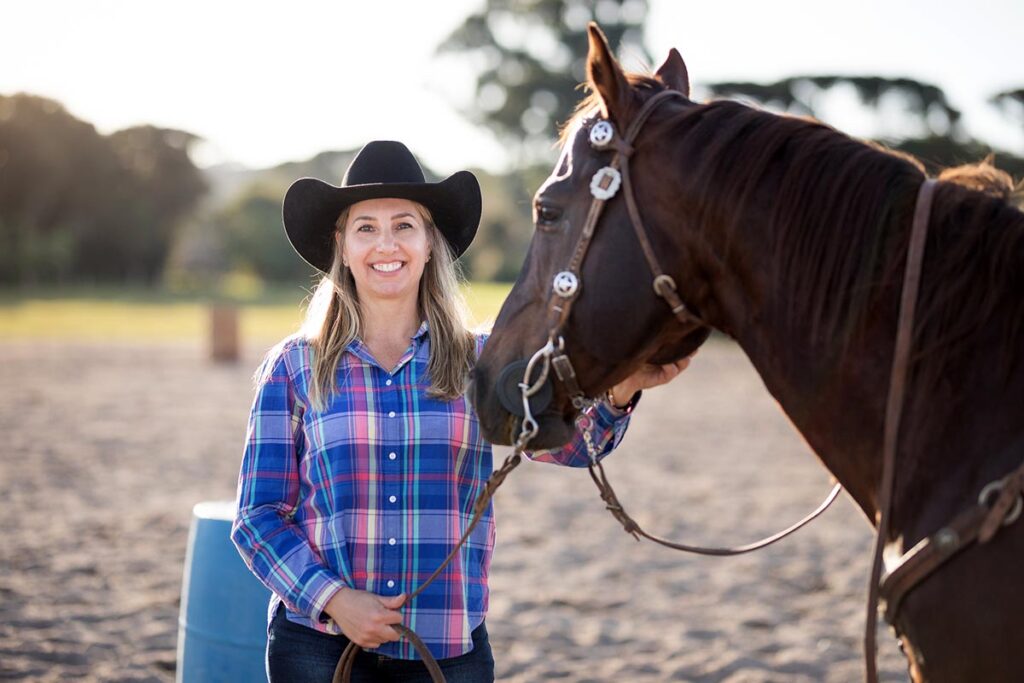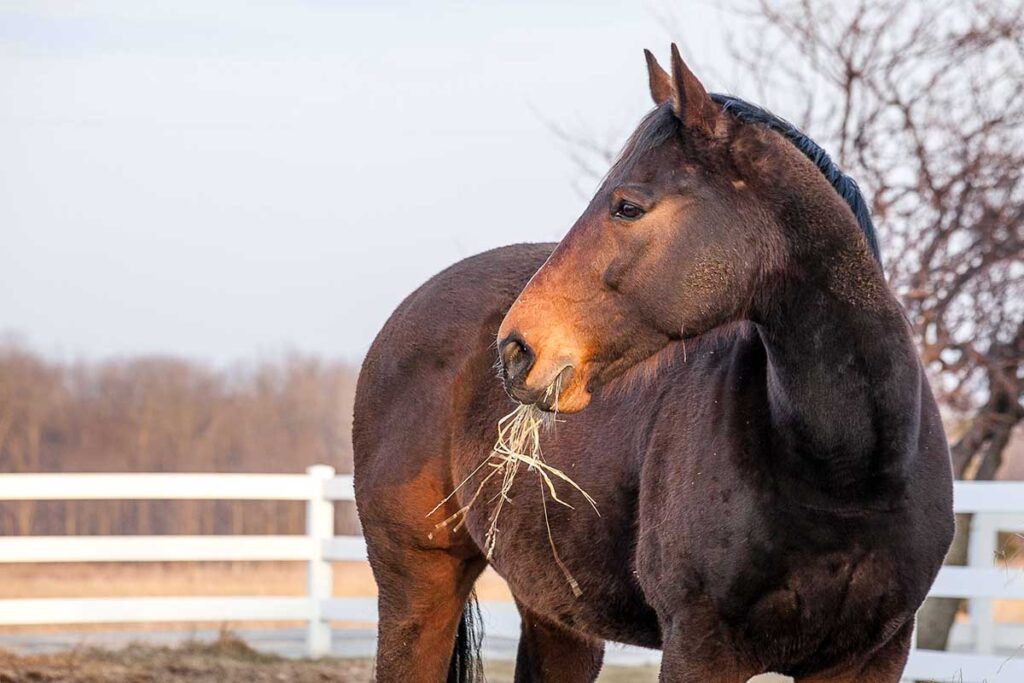With their lightweight and close-contact design, English saddles might seem easier to set and secure on a horse than their Western counterparts. Proper placement and fit, however, are just as important if you—and your horse—want to have a safe and comfortable ride. Before tacking up, review this step-by-step guide for how to saddle a horse for English equestrian pursuits.
Saddling Terms to Know
Before you get started, review your saddle vocabulary so there’s no confusion over which parts of the saddle are which:
- Girth – The piece of equipment that passes beneath the horse’s belly to secure the saddle in place.
- Billets – The straps beneath the saddle flap to which you attach the girth.
- Gullet – The channel in the middle of the saddle that lies directly over the horse’s spine.
- Keepers – Loops of material designed to keep pieces of tack secure. Your saddle pad, for instance, might have a strap with a keeper that attaches to the billet as well as a keeper through which to pass the girth. Saddles often have leather keepers on the flaps you can run the ends of the stirrup leathers through.
How To Put an English Saddle on Your Horse


To learn how to saddle a horse, follow these steps when tacking up:
- Groom your horse thoroughly so there’s no dirt or debris on his back that could cause rubs or chafing under the saddle.
- The type of saddle pad you’ll use depends on your preference and your saddle’s fit. Stand at your horse’s left side, and place it evenly on your horse’s back and withers so it protects this sensitive area from rubs.
- Make sure you’ve run the stirrup irons up each stirrup leather so they don’t bang against your horse’s sides when tacking.
- Still standing on the horse’s left side, place the saddle evenly on the middle of the pad, at the base of the withers. Slide it down just off the withers and away from the shoulders so it rests level on your horse’s upper back.
- Lift the pad up into the saddle’s gullet over the withers to prevent pressure in this area.
- If the saddle pad has keepers that attach to the billets, secure these to prevent the pad from slipping beneath the saddle.
- Next, prepare to put on the girth. If the saddle pad has a girth keeper, remember to slide the girth through this loop. Some girths have elastic attachments on both ends, while others only have elastic on one end. In the latter scenario, buckle the nonelastic end of the girth on the right side of the horse, to two of the three billets (most English saddles have three). Most riders use the first and third billet. Then secure the left, elastic side so that it’s snug enough to prevent saddle slipping but not yet tight—you should be able to easily slide your hand between the girth and your horse’s body.
- Before you mount, check that your saddle is still placed appropriately and hasn’t slipped back or to the side, then tighten your girth evenly on both sides.
Reverse this process to take the saddle off.
Take-Home Message
As you practice tacking your horse up, saddling should become second nature. You might ask an experienced rider to check your work, however, the first few times to make sure you’re doing it right. Also make sure your saddle fits properly and doesn’t have any damaged or broken parts. Then, tighten your girth, adjust your stirrups, and enjoy the ride!
Related Reading:
Are you enjoying this content? Sign up for My New Horse’s FREE newsletter to get the latest horse owner info and fun facts delivered straight to your inbox!





